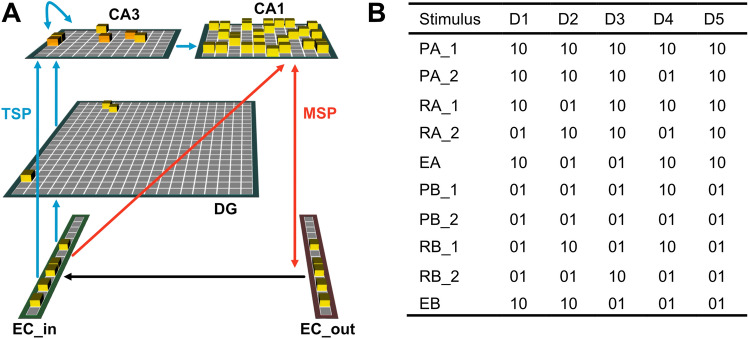Figure 3.
(A) A visualization of the hippocampal model used for computational simulations. The input layer, EC_in, represents superficial layers of entorhinal cortex. Information flows along two paths, the monosynaptic and trisynaptic pathways (MSP and TSP). Hidden layers represent hippocampal subfields dentate gyrus (DG), cornu ammonis 1 (CA1) and cornu ammonis 3 (CA3). The model acts as a simple encoder and attempts to replicate its input in EC_out, which represents deep layers of entorhinal cortex. EC_in also receives input from EC_out to simulate big-loop recurrence. (B) Vector notation for prototypes, rule-followers, and exceptions (P, R, and E, respectively) in categories A and B. Dimensions 1 through 4 represent the features outer petal colour, outer petal shape, inner petal shape, and central disc colour; dimension 5 indicates category. All features are binary and represented in a padded format in the model (i.e., ‘10’ or ‘01’).

